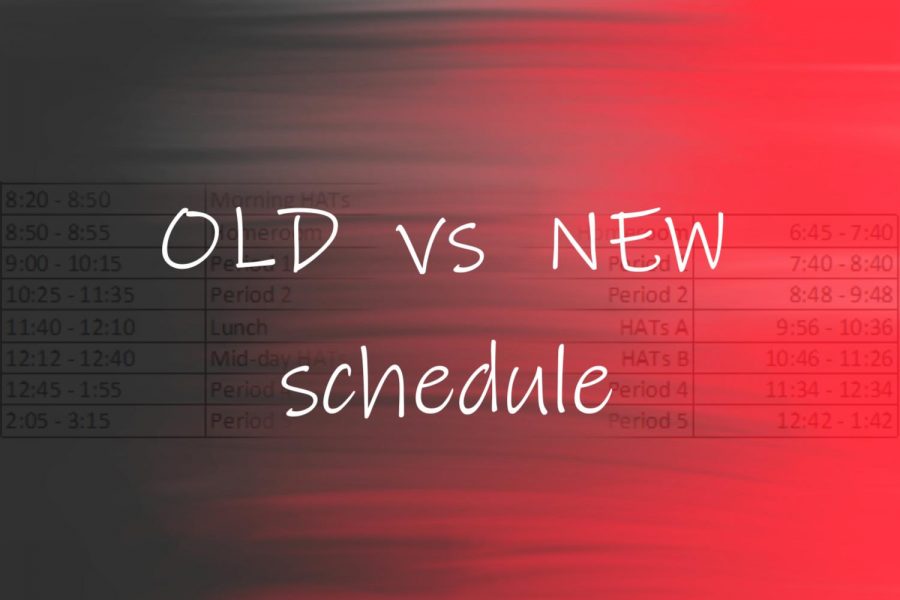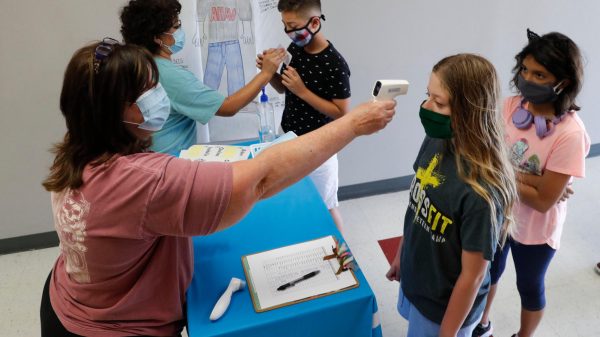House Editorial: New Schedule Preferable–Half-Day Schedule Would Be Even Better for Remote Learning
When hybrid was on its way, a new schedule came with it. Although the start to hybrid has been slow, the implementation of the new schedule has not been stopped. After hybrid was canceled due to the recent surge of COVID cases, administration made the decision to continue with the hybrid schedule remotely instead of reverting back to the old. With the change, synchronous-by-appointment Mondays replace classes at the start of the week, earlier start and release times get teachers and students online at 7:30 a.m. and a longer mid-day HATS is set.
We prefer the new schedule, but believe that the half-day schedule with HATS moved to either before or after the school day would best accommodate all students and teachers.
The earlier start times and shorter class times of the new schedule allow students to have afternoons free, rather thanfeeling as though they wasted the rest of the afternoon with classes. We enjoy having time off on Mondays after the weekend and working independently on assignments. With less time devoted to being on a class meeting, students are allowed to catch up on assignments, ask questions, and are given more time during school hours to complete work. While school work is still given on Mondays, a break away from the Teams meetings is refreshing for students; assignments are typically minimal and are completed earlier in the day.
In addition to the benefits, the new schedule has some flaws. While an early lunch is more feasible, as it acts as an even break between second and fourth period, many students end up eating their lunch after HATS because eating lunch an hour or two after breakfast is early.
However, the majority of teachers would rather have the prior schedule. In a survey sent out to all teachers, 49 responded. When asked which schedule they prefered, 63.3% of the teachers favored the old schedule because it had longer classes of 70 minutes compared to the new 60 minutes, giving teachers more time to teach. In the AP realm, teachers have more content to get through over the course of the year. While losing ten minutes may not seem like that much, some teachers still have classes on Monday just to be aligned with the curriculum.
Because they are using Mondays, most teachers end class earlier before the 60 minutes are up and many teachers let their students use the asynchronous day to reach out if needed.
In addition, some teachers may have their own families to care for in the morning. Having a later start time allowed teachers to get situated after getting their children ready for school, something they may have to deal with during classes now that the schedule is changed.
However, at the same time, earlier start times allow students and teachers to have their afternoons free to do as they please, whether that be spending time with family or getting work done for a class.
Students who like the old schedule say they preferred first period’s late start at 9 a.m. On an Instagram poll sent out on Dec. 11, two-thirds of the voters preferred the old schedule. Many of them said that they work better when they wake up later.
While late starts mean more Zs in the morning, it means fewer at night. Students who chose the new schedule said that school starting earlier means it ends sooner, too.
Regarding the HATS schedule, the teachers showed almost an even split between a preference for the morning HATS versus the new 9:56 to 11:26 HATS, with a slightly higher preference for the old HATS periods.
Many students preferred the split HATS to ask questions before first period, and enjoyed a short break in between second and fourth period, especially since the new HATS has lunch well before noon. Some students would even prefer it if the half-day schedule replaced the current schedule to have most of the day to themselves.
As a solution to the conflicts between the old and the new schedule, we recommend considering a switch to the half-day schedule if we continue to stay remote. While having a break between periods is beneficial, removing HATS and committing to a constant half-day schedule would save more time, as students would only use HATS at the beginning or end of the day if they needed it. With this schedule, it could be shifted to accommodate for a later start time for those that need to sleep in, and allow for students to ask teachers questions before the first period.
There are issues to this as well, as students and teachers may feel rushed between classes, and in the long run, this schedule might feel exhausting. Regardless, with this modification to the schedule, many of the issues that students and teachers had with the old and new schedules can be addressed fairly. With the drawbacks to the half-day schedule are the benefits that are worth the price, as students would be able to save time throughout the day, have more time off Teams calls, and allow for more time to get help after school.
With constant changes to routine, flexibility and understanding are needed from both students, teachers and staff. A year ago, we never expected to have to participate in class remotely, and only several months ago, we thought we would be adapting to a hybridized learning environment. We all have to remember to be lenient with scheduling, considering what might be best for teachers may not be best for students, and vice versa. Compromise is key, and working together is the only way we can have a successful school year.










